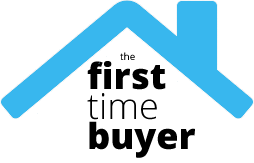How do you buy a property? If you’ve never done it before the process can be daunting.
Buying a home means a lot of paperwork, procedures and different people getting involved.
Understanding roughly who does what and when before you start can make it less stressful.
These are the basic steps to becoming a home owner in England, Wales or Northern Ireland.
- Do your homework
Buying a house is a massive investment and getting it just slightly wrong can be costly.
Unless you have big savings, chances are you’re going to have to get a mortgage.
Don’t be confused by the term, a mortgage is just a loan for buying a house.
It’s secured against the property which means if you can’t meet the repayments the lender may repossess and sell it to get their money back.
The better you understand mortgages and everything to do with them, the better armed you will be to get the very best deal.
Jane Symonds from the government-backed Money Advice Service says first time buyers should review their finances themselves before approaching possible lenders.
“It’s important to think about more than just whether you can afford the monthly repayments.
“You need to factor in all of your other monthly outgoings and be sure that you could still meet your payments if interest rates rise or your circumstances change.”
- Find a mortgage
When it comes to finding a mortgage you have several options: mortgage brokers, individual banks or searching online. Again, it’s important to research all of them.
Chartered Financial Planner Nick Bamford recommends using all three to get the best deal.
“Searching online first, gives you a good idea of what’s available. An independent mortgage broker can then provide a more in-depth search and help you through the process.
“That said, it’s still worth speaking to your bank as sometimes they’ll be able to provide special deals for existing customers.”
Once you have found the best mortgage for your circumstances the lender will give you an agreement in principle.
- Put in an offer
Once you’ve found the place you want, you’ll need to make an offer for it. Usually this will be done through the estate agent.
You can do this without already having an agreement in principle in place but having one means the offer is more likely to be accepted and everything going through smoothly.
If the seller agrees to the offer then the buying process can go ahead.
It’s worth noting that you won’t be obliged to go through with the deal if there’s a problem with the survey or contract.
- Get someone to handle the paperwork
You will need to hire a solicitor or licensed conveyancer to take care of all the legal aspects of the sale.
They will also check for any planning or local issues that may affect the property’s value.
- Arrange a survey
A survey assesses the property for any potential problems.
Your lender will also insist on getting the property valued to check that it’s worth the asking price.
There are three types of survey you can chose from:
- Condition report. The cheapest and most basic survey, it tends to be used on conventional homes or new builds. It doesn’t include a valuation or investigate possible future repairs.
- Homebuyer report. More expensive and thorough, this examines both the inside and outside of the property and includes additional valuation.
- Building or structural survey. The most comprehensive option, this is more suited to older or unusual properties like converted barns.
The advice from the Royal Institute of Chartered Surveyors is to get in touch with a local surveyor to discuss the best option for you.
If the survey throws up any problems the surveyor will usually give you an idea of how much they would cost to fix.
You might decide to renegotiate the price with the seller or pull out of the deal altogether.
- Exchange contracts
After exchanging contracts ask the seller to take final meter readings.
If your solicitor/conveyancer and surveyor are happy, now is the time to sign the contract and exchange with the seller.
At this stage you have to pay a deposit; usually 10% of the total price.
Once this happens the buyer and seller are committed to the sale. Pulling out of the deal means you’re likely to lose your deposit.
- Complete
This is where the property actually becomes yours. You get the keys and the deeds…but there are some bills to pay:
- The remaining cost of the property (usually 90%). This is transferred from your mortgage lender to your legal representative and then to the seller’s representative.
- Your solicitor or conveyancer’s fees.
- Stamp duty (a government tax). The costs are laid out here and the payments will be arranged by your solicitor or conveyancer.
- Any removal costs
Congratulations, you now own your first home!
NB this process differs in Scotland.
This material is for general information only and does not constitute legal or other form of advice. You should not rely on this information to make (or refrain from making) any decisions. Links to external sites are for information only and do not constitute endorsement. Always obtain independent, professional advice for your own particular situation.
Source: http://www.bbc.co.uk/consumer/23623491

